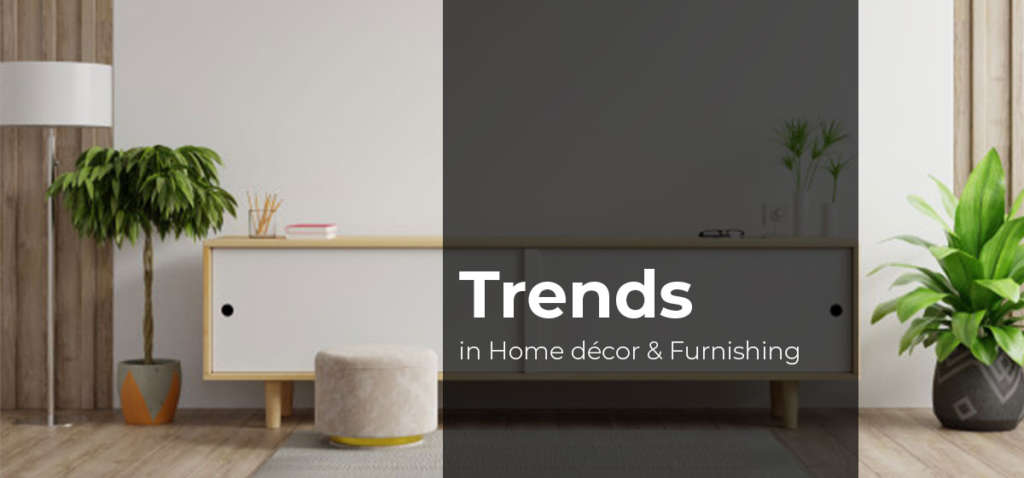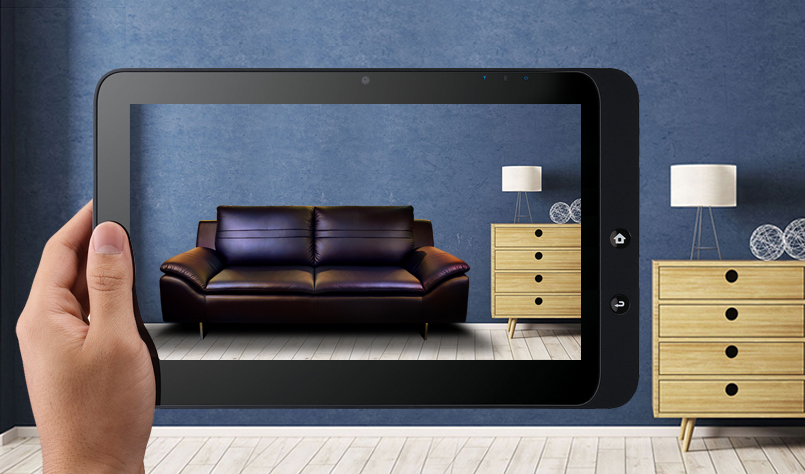
Hard to Ignore trends in Home Decor & Furnishing Segment
With the online market being the flag-bearer for growth and expansion for all scales of businesses, it is inevitable to embrace this space. The furniture and home decor verticals have been seeing surging sales build up over the last one year particularly from online growth. Small home decor and furniture brands now have the opportunity ro make a dent or be ‘just another e-store’ depending on how they make sense of the macro-economic changes around them.
With an estimated value of US$ 630.4 Billion in 2019, the home décor industry achieved a new high globally and even small businesses joined the wave resulting in high retail sales. The calculated value of the online industry is expected to be USD 83.32 bn by 2024 making this sector a global hotspot of investment and profit.
The Stage is all set with the biggies high on online
The big bulky furniture category quite naturally attracts the modern consumer who would rather have it delivered home. With increasing conveniences like easy returns and 3D visualization, who wants to step into a store physically? And with the pandemic staring in our face, one would rather not.
According to a report, 78% of buyers don’t even visit a store once before making a purchase online. This stat is crucial especially for the home décor market because for a long time the manufacturers stuck to offline sales and the sellers spent all of the money in embellishing the offline stores. Big companies like IKEA basked in sales glory through their offline retail experiences, avoiding e-Commerce with only 6 percent of sales generated online. Adapting to the changing consumer behaviours, they are now spending more than ever and are aiming to generate 30-35 percent sales from the online market. When the retail kings are taking such drastic steps, there is no denying the fact that even small businesses need to make eCommerce their priority.
Before they take the plunge, they must consider a few caveats though
Know that visual search is leading the space

You don’t need words to search for your dream furniture. Knowledge of hashtags and a few visual filters will do. Pinterest claims that 87% of all their users buy something based on what they see in pins. Sounds intuitive ? The millennial generation never buys a thing without checking for options online – through pins, hashtags and even visual search engines. They click what they like and instantly do a reverse visual search to see where to buy it. Text based search is inefficient in a category like home décor and 74% of consumers voiced this in a research. Compare that to #homedecor which has 70 million posts. It is inspiring. Is it any wonder that IKEA India has 222K followers on Instagram? And that is not just fancy numbers. It is a serious investment.
In 2017 Wayfair launched ‘Search with Photo’ that allowed consumers to search for furniture based on a picture they have with them. The search query would return similar furniture. Of course, such a technology is claimed by Google and Amazon as well. However, what’s impressive is the way Wayfair has trained the machine with its in-house data of numerous furniture types. Wayfair is showing its seriousness in this direction by investing heavily into object detection and visual search improvements.
Look at Target – they forged a partnership with Pinterest to incorporate Pinterest lens, the visual search tool on their app. And Target strongly believes that 50% of all future searches will be voice or visual driven. Even Sephora uses Color Match to find matching cosmetics for consumer’s apparels and accessories.
The future is visual and any décor store set up now will have to piece this together.
Embrace innovation and technology
Home décor industry is thriving and witnessing immense growth because touch-and-feel before buying is going out of the window. Thanks to technology, of course.
Virtual planners
Virtual reality has gladly connected the dots between an offline store visual experience and online product catalogue. It is giving buyers the liberty to design their homes in the most realistic way possible. Big brands like IKEA let the buyers use VR technology to enter the virtual kitchen and live it. The buyers only have to give their measurements and planning checklists. A professional kitchen planner is online to guide. Such kinds of innovation have helped buyers take better decisions and paved the way for higher brand value and immersion.

Realistic Experience
Use of AR/3D visualisation allows potential buyers to actually place their sofa, vase, wall art or other home furnishing items in their living room and get a real feel of how it will look in their space. This computer-generated superimposing of products into a real scenario beats the traditional catalogue viewing experience, paving the way for even small companies to shine and pose huge competition to the larger brands.
Detailed Imagery
A 3D image allows the buyer to see every detail of the product they are eyeing. With this technology, customers can actually view every product from all angles inside and out. Imagine checking out the drawers inside a wardrobe or the storage space provided inside a bed – a luxury which was otherwise not possible without 3D rendering.
With such tools at hand, even the small start-ups can take big strides
Make wise investment decisions
Investing in the latest innovations may seem a bit daunting and needless to the small businesses who are still struggling with making a presence online. But that is the very reason that brands need to start leveraging the latest tools at the earliest.
And that does not mean 3D visualization or AR implementation immediately. It means baby steps in the visual imagery direction. Little investment in professional post-processing of images can go a long way in standing out online. After all, 67% of users say images influence their buying decision.
Furniture is a status symbol and a reflection of personal taste. If the buyer is expected to shop off your online store, he deserves to see a world-class image, nothing less.
Consider these changes happening around us.
Lower barriers:
Clicking furniture or décor once meant engaging in expensive professional photography services to stand neck to neck with large retailers. Today, set up an inhouse studio and you are ready to go. Of course, raw pictures look unprofessional and burn the trust of consumers so professional photo editing is a must. There are multiple services available globally that make it super affordable, taking away any reason to skip it. All you do is upload your images and the entire workflow is set.
Easy upgrade:
Not everyone has the patience to learn photography but that is no excuse in 2020. Photography apps can be freely downloaded from the app stores to click like a pro. They allow you to focus on the main object, set the right angles, know the contrasts – everything a photographer needs to know. Just toggle and play around to get immersive pictures. What more can one ask for?
If an AI-based app can change a human picture to make it look 30 years younger or older, imagine what it can do to furniture or product pictures. The possibilities are endless and the power is in our palms.
Reduced costs
The cost of professional pictures and their photo editing has gone down considerably with tech coming in the picture. The once labour intensive industry is driven by AI and tech-enabled workflows. The investment is significantly lower. Image editing is pretty much a one-time expense in the lifetime of a product and it gets recovered quickly.
Be forward looking
Businesses are not required to spend a fortune in order to earn buyers on the web. Even the least amount spent on right tools and technology can help them achieve substantial results and revenue.
Even in critical times like Covid-19 global pandemic, the brands that had the luxury of good online presence, did not suffer a massive amount of loss proving that digitalisation is the long-term solution for all industries. Letting go off traditional methods of marketing and retail selling is a bitter step but if there is a good time to try visual marketing or embrace technology, it is right now.
And if you are really looking to create an impact, then make the visual experience as good as offline shopping with the best in-class, immersive visual content.

